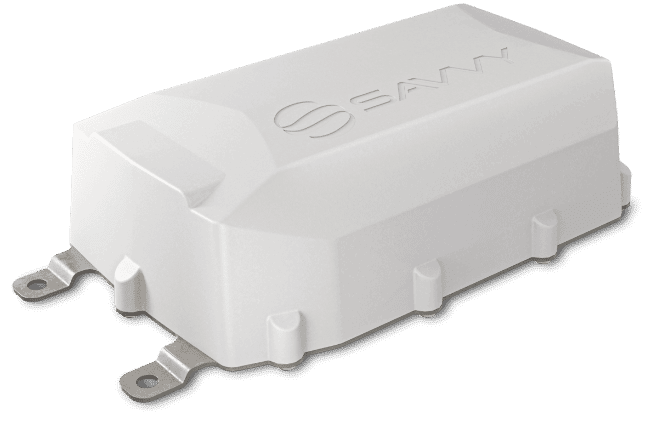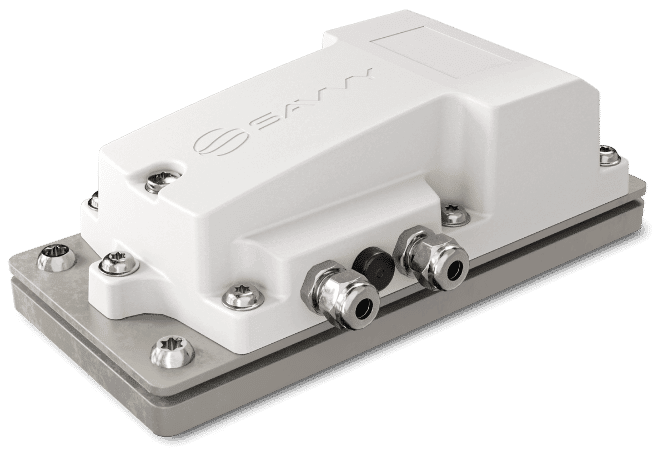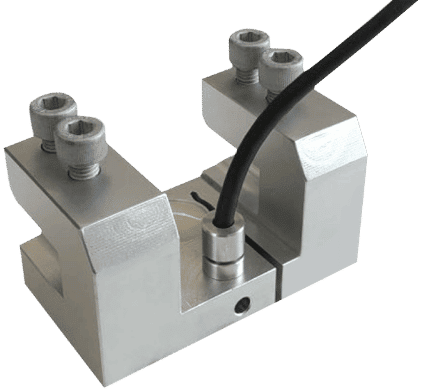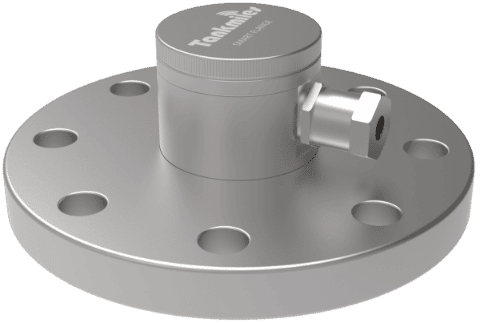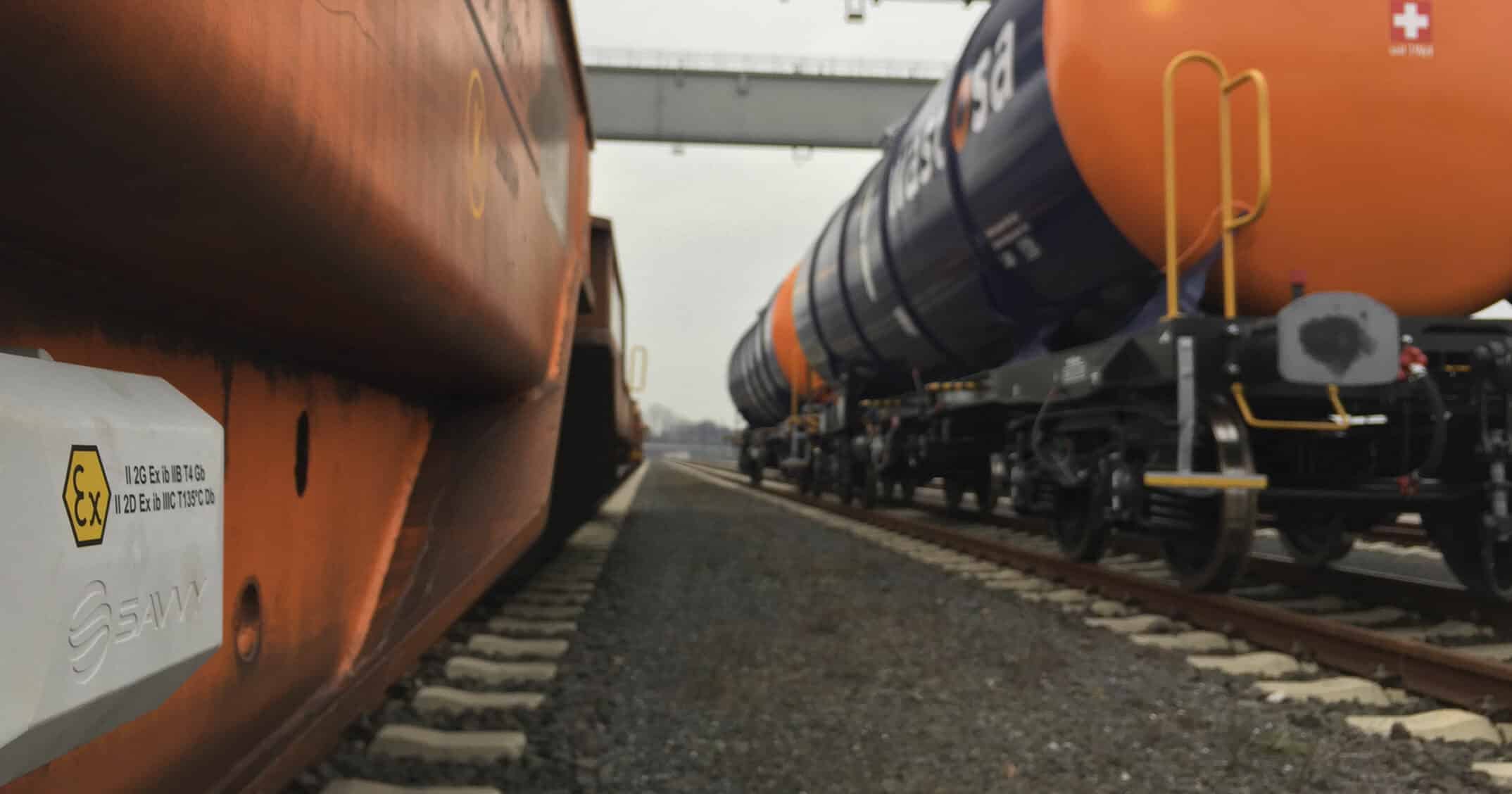
Mit Unterstützung des Bundesamts für Umwelt (BAFU) führten die Güterwagenvermieterin Wascosa und SAVVY® Telematic Systems das Forschungsprojekt „Flachstellenerkennung“ durch und entwickelten daraus eine wahre Innovation für den Schienengüterverkehr.
Flat spots on freight wagon wheel sets are problematic. Not only do they lead to increased noise emissions, they also cause the wheel sets to wear out more quickly. In many cases, the flat spots are detected only after many kilometres on the rails, resulting in increased defects and costs.
Objectives of the research
The objective of the research project was to develop a reliable early detection system using telematic devices without the need of installing an external sensor system and transmitting information to the IT system environment via API interfaces.
When the project was launched, Wascosa AG had already equipped several hundred intermodal wagons with telematic systems developed by SAVVY Telematic Systems AG. This fleet of intelligent freight wagons constituted a solid foundation for the 1-year project’s proof of concept. With average kilometrage exceeding 100,000 km – even 200,000 km are not rare – intermodal wagons are some of the most intensely used freight wagons in the business. Correspondingly, flat spots will affect noise emissions.
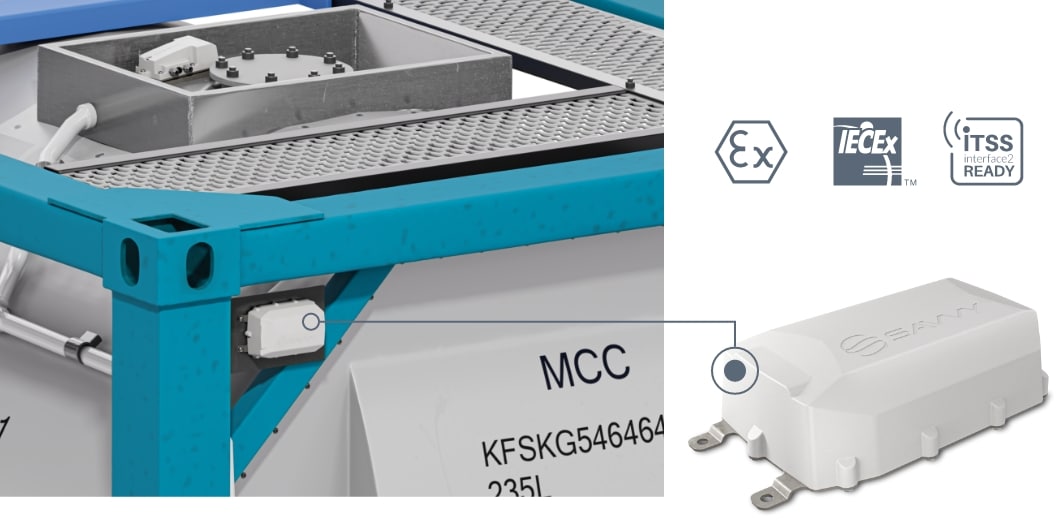
Flat spots generate typical acoustic patterns
However, noise perception, especially as it pertains to trains, not only depends on the volume but also on the characteristics of a sound emission. While the sound of a passing freight train can be heard from quite a distance, it is not necessarily annoying; a flat spot on the other hand generates a distinct, unnatural periodic thumping sound.
During operations there are a lot of factors that have an effect on the wheel (imbalance, uneven running surfaces and infrastructure etc.) and the wagon (natural vibrations, load influences etc.). This leads to a wide range of different overlapping frequencies which are perceived as a “whooshing” sound. Not every recurring vibration is a flat spot and, vice versa, not every disturbance on the running surface corresponds to a flat spot. It is therefore important to find significant correlations between the measured data of the affected wagons and the dimensions of the flat spots on the wagon wheels.
For the whole duration of the research and development project, the SAVVY® CargoTrac-Ex telematics device recorded innumerable parameters, such as e.g. accelerations in three axes (x, y, and z), the velocity or position of the Wascosa wagons. At SAVVY, big data analyses were conducted with the large amount of data collected from the Wascosa wagons to recognize flat spot patterns and develop reliable algorithms for flat spot detection.
SAVVY’s algorithm detects flat spots reliably
The aim of the flat spot algorithm developed by SAVVY is to analyse, evaluate and transform the vibration parameters in the time and frequency range so that it generates significant and reliable indicators of the wagon’s dynamic vibration behaviour. The measured data is processed directly on the telematic system. The resulting indicators are recorded locally on the telematic system and compared with historical parameters. If there is a flat spot on the wagon, then an alarm is set off.
The final algorithm was successfully integrated into the telematic firmware and rolled out on the Wascosa wagon fleet during the project. Initial applications for other SAVVY customers have confirmed the algorithm’s effectiveness: new flat spots were also reliably detected in that context.
“The results have exceeded expectations by far. Thanks to the new data, we can effectively recognise critical situations, remedy them efficiently, and have an additional tool to manage vehicle maintenance and continue to optimise our predictive maintenance process.”
A practical and economical solution
From the onset, the research project was aimed at developing a solution for operators that was economical and suited for everyday use. Each development stage was reviewed in this respect and the results were optimised accordingly. Thanks to the SAVVY team’s experience and the large amount of data from Wascosa’s high-performance intermodal fleet, a procedure was created that hardly affects the telematic system’s power consumption, thereby protecting existing investments. In addition to noise reduction and added safety, positive economic effects are also expected thanks to the early remedy of defects.
The key to this reliability lies in SAVVY team’s 20 years of experience in developing high-precision, robust telematic devices and intelligent software algorithms. The algorithms make the telematic device intelligent in such a way that notifications are only sent if needed. Transmission in 10 minute intervals e.g. is not required. In addition, the device’s battery-saving software intelligence ensures an autonomous lifecycle of up to 15 years.
“We are extremely pleased to have successfully brought this project with Wascosa to its roll-out phase. Our collaboration has demonstrated that Wascosa is an innovative partner. We would be happy to conduct other R&D projects with Wascosa, projects that will continue to make rail freight shipments more innovative and efficient.”

Background information
In the year 2000, some 265,000 people were exposed to damaging or annoying railroad noise. To protect them, a comprehensive noise protection plan in accordance with the Swiss Federal Railroad Noise Control Act (14 March 2000) was implemented by 2015. Measures include work on Swiss rolling stock, noise barriers, and sound-proof windows. This makes it possible to protect between 160,000 and 170,000 people from noise while meeting the deadlines in most cases and undercutting the original budget by a considerable margin.
From the very beginning, the focus of the research project “Flat Spot Detection” was on generating a solution that is suitable for daily use and also makes economic sense for the (rail) operators. This goal was re-examined in each development step and corresponding optimizations were implemented. Thanks to the many years of engineering and development experience of the SAVVY team and the data from the high-performance Wascosa Intermodal fleet, a process was developed that hardly affects the energy consumption of the telematics system and thus safeguards investments already made. In addition to the noise reduction and the safety gain, positive effects in terms of business management are also expected due to early damage repair.
Über SAVVY® Telematic Systems AG
SAVVY® Telematic Systems AG (www.savvy-telematics.com), mit Sitz in Schaffhausen, ist führend in innovativen Telematik- Sensorik- und Softwarelösungen, die einen wesentlichen Beitrag zur Digitalisierung der Chemie- und Logistikbranche leisten. Ziel ist es, durch effiziente Arbeits- und Logistikprozesse die Wertschöpfung in diesen Unternehmen zu steigern. SAVVY® kombiniert High-Tech Telematik-Systemlösungen für den Einsatz an Schienengüterwagen, (Tank-)Containern, IBCs sowie in Fahrzeugen oder Maschinen mit einer hochentwickelten Telematik-Technologie sowie einem prozessorientierten State-of-the-Art Portal. Das Leistungsspektrum beinhaltet zudem eine weitreichende Prozessberatung und ein intelligentes Prozessdesign für alle Telematik- und sensorikbasierten sowie zu digitalisierenden Geschäftsabläufe der Chemie- Industrie- und Logistikunternehmen. SAVVY® ist seit Mai 2014 Enkeltochter der im SDAX-notierten INDUS Holding AG-Gruppe (www.indus.de) und bietet ihren Kunden dadurch eine am Markt einzigartige finanzielle Stabilität als Investitionsschutz sowie absolute Neutralität in der Datenhaltung.
About WASCOSA AG
The family-owned company Wascosa, headquartered in Lucerne, was founded in 1964 and is one of the pioneers in the industry. Its core business is the leasing and management of freight cars for rail transport. Wascosa procures modern freight cars that meet the needs of the loading industry. The fleet ranges from tank wagons for the chemical and petroleum industries to wagons for combined transport and wagons for bulk transport. More than 60 people are employed at the Lucerne site, serving national and international customers.
From the very beginning, the focus of the research project “Flat Spot Detection” was on generating a solution that is suitable for daily use and also makes economic sense for the (rail) operators. This goal was re-examined in each development step and corresponding optimizations were implemented. Thanks to the many years of engineering and development experience of the SAVVY team and the data from the high-performance Wascosa Intermodal fleet, a process was developed that hardly affects the energy consumption of the telematics system and thus safeguards investments already made. In addition to the noise reduction and the safety gain, positive effects in terms of business management are also expected due to early damage repair.
Press contact of SAVVY® Telematic Systems AG
 Aida Kaeser
Co-Founder & CEO
Aida Kaeser
Co-Founder & CEO




